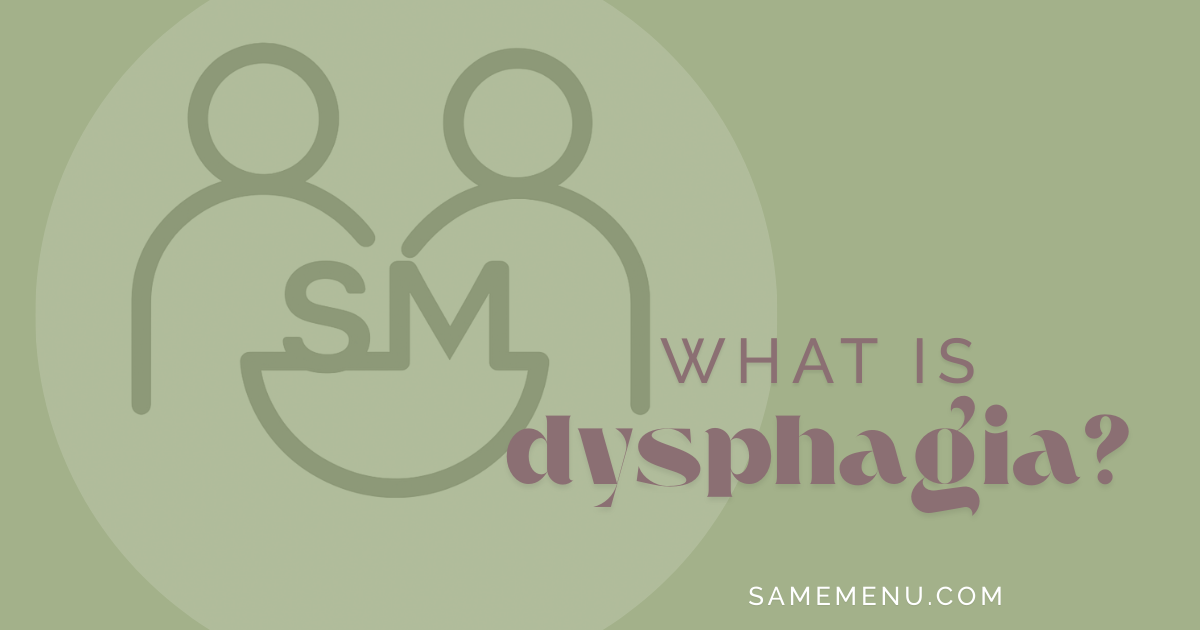Swallowing is something most of us take for granted, until it doesn’t feel easy anymore. For some people, eating can shift from an automatic, enjoyable part of the day into something that feels uncertain, uncomfortable, or even exhausting. The medical term for this is dysphagia, which simply means “difficulty swallowing.”
As both a speech-language pathologist and someone who’s spent a decade working in restaurants, I’ve seen the full spectrum: people savoring a beautiful plate of food without a second thought, and others carefully negotiating each bite because the act of swallowing doesn’t feel reliable. Sometimes the cause is clear, like after surgery or illness. Other times, there’s no obvious diagnosis, but the worry or discomfort around food is still very real, and it changes how a person approaches mealtimes.
How Dysphagia Shows Up in Everyday Life
Dysphagia isn’t one single problem. It can show up in many subtle ways:
Taking longer to finish meals because swallowing feels like extra work.
Avoiding certain textures, like dry rice, stringy meats, or foods that break apart unpredictably.
Choosing only foods that feel “safe” or predictable, even if that means less variety.
Feeling anxious around meals, which can be just as limiting as a physical difficulty.
Some people describe food “not going down right,” others say they feel tense just thinking about eating. Whether the challenge is physical, sensory, or a mix of both, the result is the same: food loses a bit of its ease and enjoyment. And when eating feels unpredictable, it can ripple into energy, nutrition, and social connection.
Why Dysphagia Happens
There are many reasons why swallowing might not feel the way it used to. Sometimes there’s changes in the muscles or nerves after a stroke, neurological conditions like Parkinson’s, or side effects from treatments like radiation. Age itself can also play a role, with natural shifts in muscle strength or coordination making eating feel less effortless.
But not every experience of swallowing difficulty comes with a neat medical label. For some people, the tests show “normal,” yet meals still feel uncomfortable or stressful. A dry bite of bread may seem harder to manage than expected, or the memory of one bad meal lingers and makes food feel unsafe. Fatigue, stress, or heightened sensory awareness can all play into how swallowing feels day to day.
It’s important to recognize that this isn’t “in your head.” The experience of food feeling risky or unpredictable is real, and it shapes choices just as much as a documented diagnosis does. Whether it’s driven by physical changes, by sensory factors, or by a mix of both, these challenges deserve to be taken seriously, because they affect not just nutrition, but quality of life.
Why Speech-Language Pathologists Are Key
When people think of swallowing problems, they often picture a doctor like ENTs or gastroenterologists, who do play an important role in identifying medical causes. But once the question becomes “How do I actually eat safely and enjoyably in my everyday life?” that’s where speech-language pathologists (SLPs) step in.
SLPs specialize in the mechanics of swallowing and the practical strategies that make meals possible again. We don’t just look at what’s happening in the throat; we consider the whole experience of eating, from how food is prepared, to how textures feel, to how much effort it takes to finish a meal. Our job is to match a person’s unique needs with foods and strategies that make swallowing easier, safer, and more comfortable.
That’s why tools like the International Dysphagia Diet Standardisation Initiative (IDDSI), a global framework that helps people choose food textures and drink thicknesses, exist. (You can explore the official IDDSI Framework here).
In my own work with clients experiencing dysphagia, and from my years in restaurant kitchens, I’ve learned that the best solutions often come from blending science with the art of cooking. It’s not just about safety; it’s about restoring confidence and pleasure at the table. Because when food feels approachable again, it nourishes more than the body, it restores connection, independence, and joy.
Living With Dysphagia
Living with dysphagia doesn’t mean giving up on good food. It means rethinking how meals are prepared and served so that they feel safe, consistent, and enjoyable. Texture modifications aren’t about taking away flavor, they’re about creating dishes that are easier to manage without losing the comfort, beauty, or cultural traditions that make them meaningful.
That might look like pureeing vegetables into silky soups, or baking casseroles that hold together without stray crunchy bits. With the right approach, a family table can be shared by everyone whether they need a meal that’s pureed, minced & moist, easy to chew, or simply predictable in texture.
The dysphagia community has been building these solutions for years, and their knowledge can benefit anyone who wants meals that feel approachable. Tools like the IDDSI Framework provide a shared language and scientifically-backed steps for textures, while speech language pathologists offer guidance on how to personalize it to your individual life. At Same Menu, you’ll find IDDSI labeled recipes and resources designed to show what that looks like in practice, from smooth and creamy purees, to easy to chew comfort foods.
If swallowing feels more difficult than it should, or if meals have started to feel unpredictable, know that you’re not alone. With the right strategies, it’s possible to bring safety, variety, and even joy back to mealtimes. And if you’d like to explore how this looks in real kitchens, start with my recipe collections, each one with adaptations for every member seated at your table.

Leave a Reply